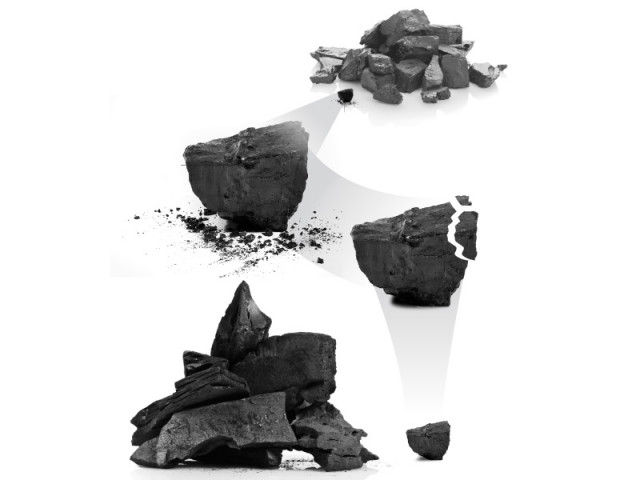Thar project: Time to light up the coals
The fossil fuel contributes 39% of the world’s total power generation.

The World Bank’s largest ever assistance to Pakistan has been for the Thar Coal project. The institution has invested a massive $8 billion out of the $13 billion required to kick off the project, which is in motion as we speak.
A lot needs to be cleared about the untapped natural resource. At 380 kilometres from Karachi, the massive natural resource is spread over 4,719,025 acres in Thar, bound on the eastern side of the border with India.
The region is a vast desert plain, where people rely on rainfall and monsoons to cultivate Bajra and Gawaar as cattle and livestock contribute 60% of their livelihood. In good rainy years, lentils, melons and sesame are also grown. Handicrafts, cloth embroidery and carpets weaving are the other sources of income. Between vast sand dunes, the flat plain offers a chance to cultivate and live, in an arid zone hit by drought in the last 6 to 7 years.
Thar Desert in the past has been low on political priority, hence the area’s communication levels are not up to the mark while education and negligible have been neglected.
Research indicates power production through crude oil is becoming unfeasible due to its high price and alternative solution to produce cheap energy is need of the hour.
Coal seems to be the prime candidate as it caters to over 40% of the world’s power generation and is increasing day by day specifically in developing countries. WEO (world energy outlook) forecasts future energy demand in emerging Asian countries increase to 60% by 2020, increasing massively from 26% in 1980.
Fossil fuel will remain the primary source of energy through 2030 with demand peaking to 90%, with markets like India, China and Pakistan using coal as the dominant fuel.
Moreover, coal is the most vital, abundant, cost-effective and secure fossil fuel. Coal is also the safest fossil fuel for storage and transportation.
Coal deposits in Thar Coal are spread over 9,000 kilometers and add up to around 176,506 billion tons of coal, making it one of the largest coalfields worldwide, according to a research by Geographical Survey of Pakistan. The field can meet Pakistan’s energy requirements easily for the next 100 years. In a breakdown of the estimated value of energy resources in Pakistan, oil values at $6 billion while coal values at $5.54 billion dollars. Countries like China, UK, USA, Russia, Germany and Australia have shown keen interest to partner and make use of the coal.
The estimated inferred coal resources are between 1.2 km to 4.8 km below earth’s surface and indicated coal resources between 400 meters and 1.2 km below the ground.
The coalfield is a huge project, requiring precision and drilling know-how, hence it has been divided into four blocks. The immediate objective is to explore up to 500 million tons per block to cater the needs of four power generation units producing 1,000MW of energy for the next 30 years.
The international community has highlighted the inherent risks of coal mining with India and China suffering thousands of casualties due to failure to adhere the health and environment laws and regulation. In India, there are 70,000 premature deaths annually due to coal pollution. Even in developed countries like the United States, coal burning is responsible for approximately 13,200 deaths, 9,700 hospitalisations, and more than 20,000 heart attacks annually.
The KYOTO protocol, Toronto declaration, the World Summit on sustainable development has taken up this serious matter to protect people worldwide and ensure project and people safety simultaneously.
New technologies have to be introduced with an immense effort required by the government to inculcate the concept of 100% safety and zero negligence, if projects like these are to be implanted successfully for life.
The new president of World Bank Dr Kim, is an excellent addition as a health and environment expert. Dr Kim’s strategic depth will make the desired difference inside Thar Coal, leading us to secure World Bank’s approval on health protocols and enhance the right regulative measures through our local government, engineers and scientists.
The time is now for our government to step up the works on building blocks and make this giant initiative project, the biggest success story of Asia and lead Pakistan to be the ultimate winner as an energy giant.
THE WRITER IS A BANKER AND BROADCASTER FOR FM91.
Published in The Express Tribune, July 9th, 2012.



















COMMENTS
Comments are moderated and generally will be posted if they are on-topic and not abusive.
For more information, please see our Comments FAQ